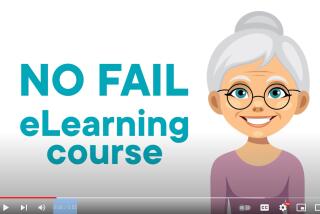N.Y. Seeks to Cope With Elderly Drivers
- Share via
SILVER CREEK, N. Y. — Lonnie (Layne) Hall lives alone in his house on the outskirts of this village, so his driver’s license is also his ticket to independence.
The license says he is 110. He insists that he is five years younger. Either way, he is New York’s oldest driver, according to the state Department of Motor Vehicles.
“How many times a week do I go out driving?” said Hall. “Oh, whenever I have to--maybe once or twice. I take my laundry out. I buy my groceries.”
Hall has a clean record, but the DMV is reviewing regulations dealing with the fastest-growing segment of the driving population: senior citizens.
New York has 1.9 million drivers over 60, said John Boffa of the governor’s Traffic Safety Committee, which is conducting the review along with the state Office for the Aging.
“The basic directive was to identify ways to make driving safer for elderly people without imposing additional burdens on them,” Boffa said.
Studies show that the eyes provide 95% of the information drivers use to make decisions, he said.
So, the width of stripes on the New York State Thruway--559 miles from New York City to Niagara Falls--has been increased to 6 inches from 4. The rest of the state’s interstates also will get wider stripes, Boffa said.
And, over the next few years, the thruway’s 15,000 signs will be replaced with ones that have greater reflectivity and larger letters.
Those changes are relatively easy. “The more complicated issue is how to deal with the drivers,” Boffa said.
According to the National Highway Traffic Safety Administration, drivers in most age groups can expect to be involved in an average of five crashes per million vehicle miles traveled.
The exceptions: the youngest and oldest drivers. For teen-agers, the figure is about 30; for those 80 and over, it is close to 40.
Three states--Indiana, Illinois and New Hampshire--and the District of Columbia require drivers to retake road tests after a certain age, generally 75.
But Boffa said New York officials are not persuaded of the merits of that because it would overwhelm the Department of Motor Vehicles.
It would also be discriminatory, said Steve Stiles at the American Assn. for Retired Persons.
“The difficulty we have is when a state selects older drivers and says (that) at age 65 you go through some special testing different from everybody else,” he said.
“Let’s do better testing,” Stiles said, “but let’s do it on a performance basis, not age.”
Boffa said that New York is moving deliberately as it considers older drivers.
“The automobile provides mobility and individuality for people in many cases,” he said. “Self-esteem is pretty deeply interwoven with the ability to drive. When you take that away from people, it can be pretty devastating.”
In rural areas, driving is essential.
“Automobiles are the only means of transportation for people to get to the doctor’s office and the pharmacy,” Boffa said.
“We’re trying to balance safety considerations with concern and sensitivity to the elderly population,” he added. “It’s not an easy dilemma to resolve, to be frank.”
More to Read
Sign up for Essential California
The most important California stories and recommendations in your inbox every morning.
You may occasionally receive promotional content from the Los Angeles Times.












